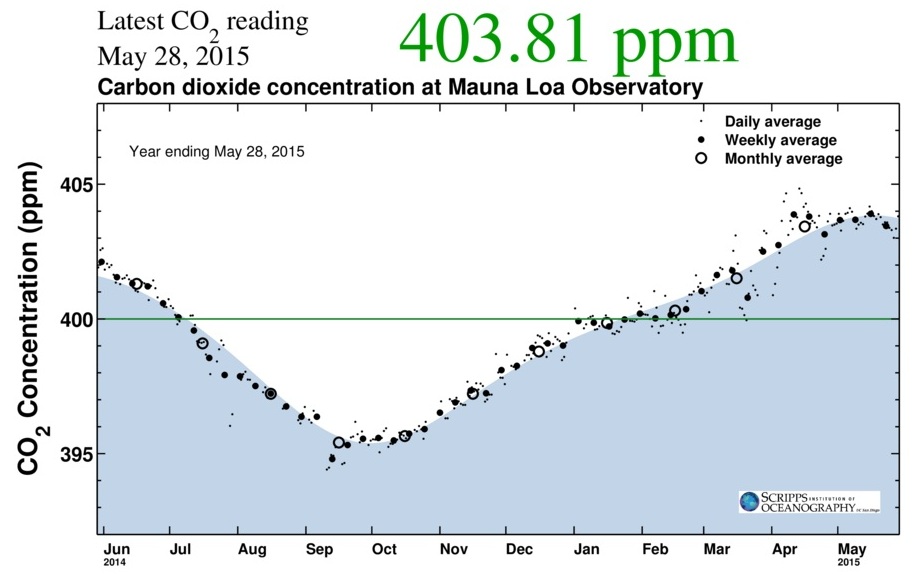Happy Birthday Babe!
[Up, Down] At least one previous post shows how clueless I often am - in particular the notion that tons of stuff is raised into the branches by mighty biological lifting forces, when in fact, the structural component - carbon - comes, with consummate sleight-of-hand, right directly out of the air. [That such thoughts come to me year after year on or about the last day of May and the first day of June is no accident. Reminded of other miracles births & beginnings; and this, without even mentioning Marilyn Monroe. :-)] This is why the detail of the Keeling Curve is saw-toothed - the 'annual oscillation' or 'annual oscillating variation' or 'seasonal fluctuation' or 'seasonality' - as carbon is incorporated into plants by photosynthesis and subsequently released again by decay. The amount of this variation is about 5 ppm - less than 1% - but this number actually just represents (some kind of) balance or difference between the Northern Hemisphere (which has more land mass and consequently more plants) and the Southern Hemisphere (which has less). The total photosynthetic uptake is on the order of 100 Gt (as reported here). Suppose some fraction of this were converted with pyrolysis into charcoal (which is relatively stable unless burned), and stored, say, in the soil. This would be no kind of solution to 'the problem' (which is human incontinence) nothing like it; but in the event that the burning of fossil fuels were stopped it could be a means of restoring climatic harmony, even (depending upon the scale) within just a few decades.  Just there, in this annual carbon 'breath', in this rhythmic breathing in and breathing out - and represented scientifically in the Keeling Curve's oscillation - is a Prāṅa Yoga of the collective planetary ecology, a meditative Koan; and perhaps the ultimate maieutic exercise.   Not-Really-A-Postscript: (In fact I got into a hurry and forgot some of what I meantersay.) First: The Brasilian charcoal kilns pictured are probably not the most efficient converters. Yes, they are very 'Small is Beautiful', running without electricity or metal parts, BUT, the biomass utilized is the Amazon rainforest, they are frequently operated with slave labour, and the charcoal is immediately trucked away to burn in (equally rudimentary) pig iron blast furnaces (the pig iron from which is shipped to Europe and North America for conversion to steel parts for ... automobiles and so on. Pyrolysis, however, is applicable in principle to just about any biomass not required for other purposes and the char can be stored in soils, enhancing water-retention and other soil qualities while not returning to the atmosphere for some possibly longish time. Second: The maples are already releasing their helicopter seeds. It seems too early for that but there they are, whirling down around me and collecting in drifts around this park bench - which just so happens to be surrounded by (wait for it) ... maple trees. Room here for a go at biological priorities & the timing of events in the plant kingdom (another time). And Third: There is a song that goes with this post: Tim Hardin's 'Reason To Believe'. The song just showed up without antecedents, from deep in some psychological compost pile, coming on the scene unbidden as this post was being imagined and composed. It may seem inappropriate to offer as birthday music BUT there's more to it than megrims - there is also a very explicit willingness to believe. At the very least it is not a song that would be sung for someone for whom the singer had lost hope. Here he is: Reason To Believe. Ahhh ... it's lookin' like a bust gentle reader; another bust in a long line of 'em.  I knew it. He brought me here to dance and left me. The orchestra's gone too. Everyone's gone. (Oh well.) |
[Up, Down]